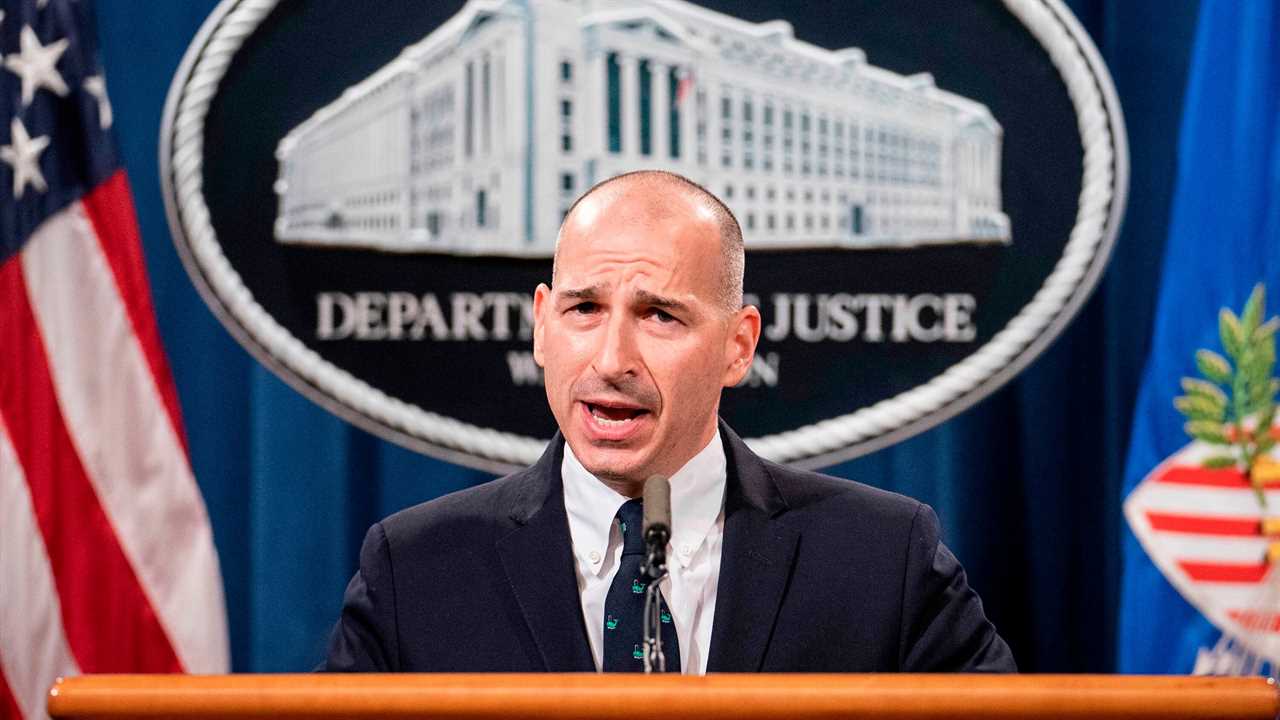
WASHINGTON — Evidence the government obtained in the investigation into the Jan. 6 attack on the Capitol most likely meets the bar necessary to charge some of the suspects with sedition, Michael R. Sherwin, the federal prosecutor who had been leading the Justice Department’s inquiry, said in an interview that aired on Sunday.
The department has rarely brought charges of sedition, the crime of conspiring to overthrow the government.
But in an interview with “60 Minutes,” Mr. Sherwin said prosecutors had evidence that most likely proved such a charge.
“I personally believe the evidence is trending toward that, and probably meets those elements,” Mr. Sherwin said. “I believe the facts do support those charges. And I think that, as we go forward, more facts will support that.”
The last time federal prosecutors brought a sedition case was 2010, when they accused members of a Michigan militia of plotting to provoke an armed conflict with the government. They were ultimately acquitted, and the judge in the case said the Justice Department had not adequately proved that the defendants had entered a “concrete agreement to forcibly oppose the United States government.”
The statute on seditious conspiracy also says that people who conspire to “oppose by force the authority” of the government or use force “to prevent, hinder or delay the execution of any law of the United States” can be charged with sedition.
The government has charged some defendants in the Jan. 6 case with conspiring to derail the final certification of President Biden’s electoral victory.
Mr. Sherwin witnessed the crime as it unfolded. After he dressed in his running clothes and entered the crowd at the rally near the White House, he observed a “carnival environment” of people listening to speeches and selling T-shirts and snacks.
“I noticed there were some people in tactical gear. They were tacked up with Kevlar vests. They had the military helmets on,” he said in the “60 Minutes” interview. “Those individuals, I noticed, left the speeches early.”
“Where it was initially pro-Trump, it digressed to anti-government, anti-Congress, anti-institutional,” Mr. Sherwin said. “And then I eventually saw people climbing the scaffolding. The scaffolding was being set up for the inauguration. When I saw people climbing up the scaffolding, hanging from it, hanging flags, I was like, ‘This is going bad fast.’”
From the start, Mr. Sherwin oversaw the investigation as the acting U.S. attorney in Washington, a role that he ceded to a new interim leader in early March. He stepped down from leading the investigation on Friday and returned to Miami, where he had been a line prosecutor.
Mr. Sherwin told “60 Minutes” that the government had charged more than 400 people. Among them are hundreds accused of trespassing and more than 100 accused of assaulting officers, including Brian D. Sicknick, the Capitol Police officer who died after fighting with rioters.
Mr. Sicknick and two other officers were sprayed with an unidentified chemical agent that one of the assailants said was used to repel bears.
A medical examiner has not determined how Officer Sicknick died, Mr. Sherwin said, so two suspects were charged with assaulting an officer instead of murder. But that could change, he said.
“If evidence directly relates that chemical to his death,” Mr. Sherwin said, “in that scenario, correct, that’s a murder case.”
Mr. Sherwin said that only about 10 percent of the cases so far dealt with more complicated conspiracies planned and executed by far-right extremists — including members of the Oath Keepers, the Three Percenters and the Proud Boys — to organize, come to Washington and breach the Capitol.
He reiterated assertions he made shortly after the attack that prosecutors were examining the conduct of former President Donald J. Trump, who had told his supporters to attend the rally on Jan. 6 and egged them on with baseless claims that he had won the election.
“It’s unequivocal that Trump was the magnet that brought the people to D.C. on the 6th. Now the question is, is he criminally culpable for everything that happened during the siege, during the breach?” Mr. Sherwin said.
“We have people looking at everything,” he said.
Did you miss our previous article...
https://trendinginthenews.com/usa-politics/tom-reed-facing-groping-allegation-says-he-wont-seek-reelection-in-2022






